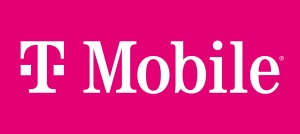4G vs. 5G: What’s the Difference?
Aug 29, 2025 | Share
Brand Guides
4G LTE is a wireless network standard that powers cell phone communications across the United States. But in recent years, 4G has taken a backseat with the advent of a new standard, 5G.
Initially introduced on a small scale in the 2019 and 2020, 5G has since become a fast-growing network standard for American cell phone users and internet customers. Using novel technology like multi-user MIMO and mmWave spectrum signals, 5G delivers much faster speeds than 4G and also has the capacity to facilitate lower-latency data transfers. It’s not available everyone in the way 4G is, but 5G now powers many cell phones and hotspots and also forms the backbone of new 5G home internet services from Verizon, T-Mobile, and AT&T.
We’ve been following 5G’s development closely for several years, so read on for a breakdown explaining the difference between 4G and 5G networks, speeds, pricing, and more.
Is 5G home internet available where you live?
Enter your zip code below to see what’s available to you.
In this comparison:
How are 4G and 5G different? | 4G vs. 5G speeds | 4G vs. 5G technology | 5G home internet | What are the different 5G types? | 4G vs. 5G latency | 4G vs. 5G availability | FAQ
In this comparison:
How fast is 4G vs. 5G?
| Provider | Avg. 4G speeds | Avg. 5G speeds | Order Online |
|---|---|---|---|

| 97.1Mbps | 195.5Mbps | View Plans for T-Mobile |
|
| 34.3Mbps | 96.3Mbps | View Plans for Verizon Home Internet |
 | 40.1Mbps | 80.0Mbps |
Data based on Opensignal’s July 2023 5G Experience Report and Mobile Network Experience Report.
On average, 5G is over twice as fast as 4G—and it’s creeping up in speed with each passing year.
4G still rules in small towns and rural areas, where 5G networks are relatively thin (or nonexistent). But 5G is getting a strong foothold in many American cities, and speeds range from slightly faster than 4G LTE to double the speed or more.
You can get faster speeds on 5G because 5G networks use higher-frequency radio bands to deliver signals. Some of these bands previously had very little commercial use, so they have larger capacities to carry data over the airwaves.
Want to see how fast your 4G or 5G connection really is? Download our speed test app to find out.
Want to see how fast your 4G or 5G connection really is? Take our speed test to find out.
5G home internet gives you affordable Wi-Fi with fast speeds
| Provider | Price | Speed | View plans |
|---|---|---|---|
| T-Mobile Rely Home Internet | $50/mo.* w/ AutoPay, plus taxes & fees. | Up to 415Mbps | View Plans |
| Verizon 5G Home Internet | $35/mo.‡ w/ Verizon phone subscription or $50/mo. w/out subscription | Up to 300Mbps | View Plans |
| Verizon 5G Home Internet Plus | $45/mo. ‡ w/ Verizon phone subscription or $60/mo. w/out subscription | Up to 500Mbps | View Plans |
| Verizon 5G Home Internet Ultimate | $60/mo. ‡ w/ Verizon phone subscription or $75/mo. w/out subscription | Up to 1,000Mbps | View Plans |
| AT&T Internet Air | $60.00/mo.§ | 75–225Mbps | |
| Starry 300 | $45.00/mo.║ w/ Debit Discount | Up to 300Mbps | View Plans |
Data as of 08/25/2025. Offers and availability may vary by location and are subject to change. See disclaimers.
While it’s mainly used for cell phones, 5G has also made inroads into home internet with the emergence of new services like Verizon 5G Home Internet, T-Mobile Home Internet, and AT&T Internet Air. That’s one thing that wireless customers never got to experience before on 4G networks.
T-Mobile and Verizon’s respective services both start out at $60 a month and give you download speeds in the range of 35–300 Mbps. They come with unlimited data and a range of promotional offers, and they don’t require contracts—making these incredibly cost-effective plans that compete well against older and more established internet types like cable. AT&T’s recently-launched 5G home internet service, Internet Air, meanwhile is mostly geared towards customers who can no longer get DSL service.
5G home internet is marketed primarily to customers who live in large cities, but the carriers have also rolled out 4G LTE versions of their service for rural users. The speeds aren’t as fast, but they offer a more competitive deal compared to the satellite and fixed wireless internet that you usually find in rural and remote parts of the United States. You can learn more about it on our 4G internet page.
Pro tip:
Take a look at our Verizon 5G Home Internet review to see how the service stacks up against more conventional fiber and cable internet. (Hint: It’s definitely worth a try.)
4G vs. 5G—How are they different?
| Wireless generation | Avg. speeds* | Availability | Compatibility |
|---|---|---|---|
| 4G | 57.2Mbps | Nationwide except for remote rural areas | Works over 4G and 5G phones, hotspots, and other devices |
| 5G | 123.9Mbps | Mostly big cities and towns, with limited rural access | Works exclusively over 5G phones, hotspots, and other devices |
*Data from Opensignal’s 5G Experience Report and Mobile Network Experience Report, both published July 2023.
5G is different from 4G because it’s the newest form of wireless technology. It’s over twice as fast as 4G on average and can deliver speeds of up to 1,000 Mbps in some urban areas. 5G phone and hotspot users experience less network congestion and lower latency rates. They’re also used for emerging services like 5G home internet, which wasn’t widely available on 4G networks.
Cellular evolution—A timeline of the 5 “G”s
| Wireless generation | Year introduced | Avg. data speed | Wireless features |
|---|---|---|---|
| 1G | 1979 | N/A | Voice calls over mobile phones |
| 2G | 1991 | N/A | Improved sound quality, encrypted communications, SMS messaging |
| 3G | 2001 | 2 Mbps | Global roaming, email, video streaming |
| 4G | 2009 | 30 Mbps | HD streaming, social media, complex gaming, interactive apps like Uber |
| 5G | 2019 | 60 Mbps–1 Gbps | Gigabit speeds, home internet, AI–based networking, automated sensors |
Info from CENGN’s history of cellular phone generations.
5G is different from 4G because it’s the newest form of wireless technology. Mainly it improves speeds and performance for cell phone users. But it also makes cellular carriers more versatile, allowing them to (potentially) use their networks for the home, the car, hospitals, and factories.
5G is the latest in a long line of innovations in wireless technology. To be sure, a 5G network is worlds apart from what was available when the Japanese company Nippon Telegraph and Telephone launched the first cell phone network in 1979.1
Back then, you couldn’t do much on a cell phone—other than, you know, call people. That started to change with the introduction of 3G in 2001, which introduced features like SMS messaging and global roaming. And then smartphones really took off when 4G came about in 2009, followed shortly by the slightly slower 4G LTE.
Pro tip:
Want to know where you can get 5G and who has it? Read our 5G providers page.
While 3G phones topped out at 2 Mbps, 4G—which wireless experts now use interchangeable with 4G LTE—delivered download speeds of around 30 Mbps. It let you stream HD video on a phone, and it opened the door for sophisticated apps like Uber, FaceTime, and Instagram. And of course it also gave us cool new games like Angry Birds and Pokémon GO.
5G is expected to take things even further. Though 5G doesn’t have nearly the same reach right now as 4G—since it’s still an emerging technology—experts have high hopes. Eventually, ultra high-speed 5G networks could facilitate a so-called “internet of everything,” in which decentralized online networks play a central role in work, healthcare, industry, transportation, and home life.8
What’s the difference between 4G and 5G technology?
4G is the fourth generation of wireless technology. It uses radio towers to deliver both phone service and wireless internet to mobile devices. 5G pretty much works the same way, but it incorporates new technology and higher radio frequencies.
5G networks also use more base stations to deliver faster speeds at a quicker response time. Eventually some 5G providers plan to decentralize their networks (using a technique called “edge computing”) to make them more flexible and adaptable to many uses.
Although 5G networks mostly rely on 4G and 4G LTE towers right now, cellular companies are working to develop “standalone” 5G networks based on a few core concepts.
- Millimeter wave signals—extremely high-frequency radio waves that give your mobile device gigabit-plus speeds over short distances.
- Beamforming—high-precision antenna arrays capable of directing wireless signals to individual devices.
- Multi-user MIMO—bulked-up 5G transmitters designed to deliver wireless data to devices at a much higher capacity.
Not surprisingly, all of this stuff will take time to build up—and it will cost a lot of money for providers too.
What are the different types of 5G?
5G networks come in three different types, which tie to the range each type has and the speeds it can deliver to your phone. Here’s a quick breakdown:
| Type | Frequency | Theoretical max speed |
|---|---|---|
| Low-band | Lower than 1 GHz | 350Mbps |
| Mid-band (C-band) | 1–6 GHz | 1,500Mbps |
| High-band 5G (mmWave) | 24–100 GHz | 20,000Mbps |
Low-band operates on many of the same frequencies as 4G LTE, delivering slightly faster speeds over long distances.
Mid-band/C-band incorporates higher-frequency radio bands than 4G, including ones that were previously used only for industrial and satellite TV purposes. The clear airwaves make for a much wider network capacity—and thus much faster speeds—for large number of users.
High-band uses “millimeter-wave” radio bands that operate at an extremely high frequency. This type of 5G can deliver gigabit-plus speeds, but only in limited areas (like a sports stadium, hospital, or parts of a city’s downtown) due to the frequencies’ weak signal strength and limited range.
4G vs. 5G latency
| Wireless standard | Latency (in milliseconds)7 |
|---|---|
| 4G | 30–70 ms |
| 5G | 5–20 ms |
5G has lower latency compared to 4G. That means 5G phones are much more responsive when it comes to things like video calls and gaming, minimizing lag and grainy video quality.
Latency (also known as ping rate) is the brief delay that happens when you send a signal from a device to a network server and vice versa. Some small amount of latency is inevitable in all internet connections because of the physical distance between your device and the server that’s giving it an internet connection.
But the lower latency you can get, the better—especially if you need internet to do things that require near-instantaneous connectivity. The lower latency rates of 4G, activities like chatting with someone over a video feed or playing a fast-paced online game become a lot smoother and easier to do.
Wireless tech experts hope that 5G could one day achieve latency rates as low as 1 ms. That would be an incredible milestone, making 5G all the more capable of supporting complex applications like systems for factories and automated cars. But that 1 ms dream is still a long ways away.
Pro tip:
Figure out your phone’s latency rate by running a speed test. Remember—the lower the number, the better!
4G vs. 5G availability
| Provider | 5G availability (% of cell phone time user connects to 5G)3 |
|---|---|
| T-Mobile | 57.9% |
| Verizon | 9.8% |
| AT&T | 20.7% |
Most cell providers have spent years building up 4G infrastructure, but they’ve only just begun building 5G networks. So 4G is pretty much available anywhere—except for remote areas and rural communities with limited cellular access. 5G’s reach is mostly limited to major cities and towns, although you can get slower 5G speeds basically nationwide.
You need a 5G phone to access 5G networks, but your phone will revert to 4G when 5G isn’t available. A report in July 2023 from Opensignal pointed out that customers with 5G phones were on a 5G network for only a part of the time they were using their phones throughout the day.3 But T-Mobile’s 5G service is expanding to the point where over half of your 5G phone time is spent on a 5G network.
Pro tip:
T-Mobile has the biggest 5G network nationwide so far. Read our guide to T-Mobile’s 5G offerings to see how you can get connected.
FAQ about 4G vs. 5G
What is 5G?
What are the disadvantages of 5G?
Will 5G work on 4G phones?
What phones support 5G?
What frequency is 5G?
Why is 5G bad?
What is 5G NR?
Looking for 5G home internet?
Enter your zip code to see what 5G home internet providers are available to you.
Sources
- Richard Galazzo, Centre of Excellence in Next Generation Networks (CENGN), “Timeline from 1G to 5G: A Brief History on Cell Phones,” September 21, 2020. Accessed February 4, 2021.
- Francesco Rizzato, Opensignal, “Mobile Network Experience Report,” July 2023. Accessed October 13, 2023.
- Francesco Rizzato, Opensignal, “5G Experience Report,” July 2023. Accessed October 13, 2023.
- Sascha Segan, PC Mag, “What Is C-Band, and What Does It Mean for the Future of 5G?,” December 29, 2020.
- T-Mobile, “T‑Mobile Nearly Doubles Its Supercharged Mid‑Band 5g in Just One Month,” October 28, 2020. Accessed February 4, 2021.
- William J. Broad, The New York Times, “The 5G Health Hazard That Isn’t,” July 16, 2019. Accessed February 15, 2021.
- Stephen Shankland, Shara Tibken, CNET, “5G Latency: Why Speeding Up Networks Matters,” July 1, 2021. Accessed July 1, 2021.
- i-SCOOP, “What the Internet of Everything Really Is—A Deep Dive.” Accessed November 10, 2021.
- Francesco Rizzatto, “Quantifying the MmWave 5G Experience in the US—July Update,” July 2021. Accessed November 10, 2021.
Disclaimers
* Guarantee exclusions like taxes and fees apply.
‡ w/ Auto Pay. Available in select areas. Consumer data usage is subject to the usage restrictions set forth in Verizon’s terms of service; visit: https://www.verizon.com/support/customer-agreement/ for more information about 5G Home and LTE Home Internet or https://www.verizon.com/about/terms-conditions/verizon-customer-agreement for Fios internet.
§ $60/mo after $5 discount when enrolled in Autopay. Paperless billing req’d. Not available in NY. Monthly State Cost Recovery Charge in TX, OH, NV applies. . Service subj. to Internet Terms of Service at att.com/internet-terms. Offers may be modified, or discontinued, at any time without notice. Other conditions may apply to all offers. Speeds based on wired connection. Actual speeds may vary. For more info, go to www.att.com/speed101.
║Debit Discount requires valid debit or prepaid card as payment method (otherwise $5 more per month). Standard rates apply after promo period. Speeds based on wired connection. Actual speeds (including wireless) are not guaranteed and will vary due to device limits, multiple users, network & other factors. Services subject to all applicable service terms and conditions, subject to change. Plan availability varies. Restrictions apply.
Author - Peter Holslin
Peter Holslin has more than a decade of experience working as a writer and freelance journalist. He graduated with a BA in liberal arts and journalism from New York City’s The New School University in 2008 and went on to contribute to publications like Rolling Stone, VICE, BuzzFeed, and countless others. At HighSpeedInternet.com, he focuses on covering 5G, nerding out about frequency bands and virtual RAN, and producing reviews on emerging services like 5G home internet. He also writes about internet providers and packages, hotspots, VPNs, and Wi-Fi troubleshooting.
Editor - Aaron Gates







